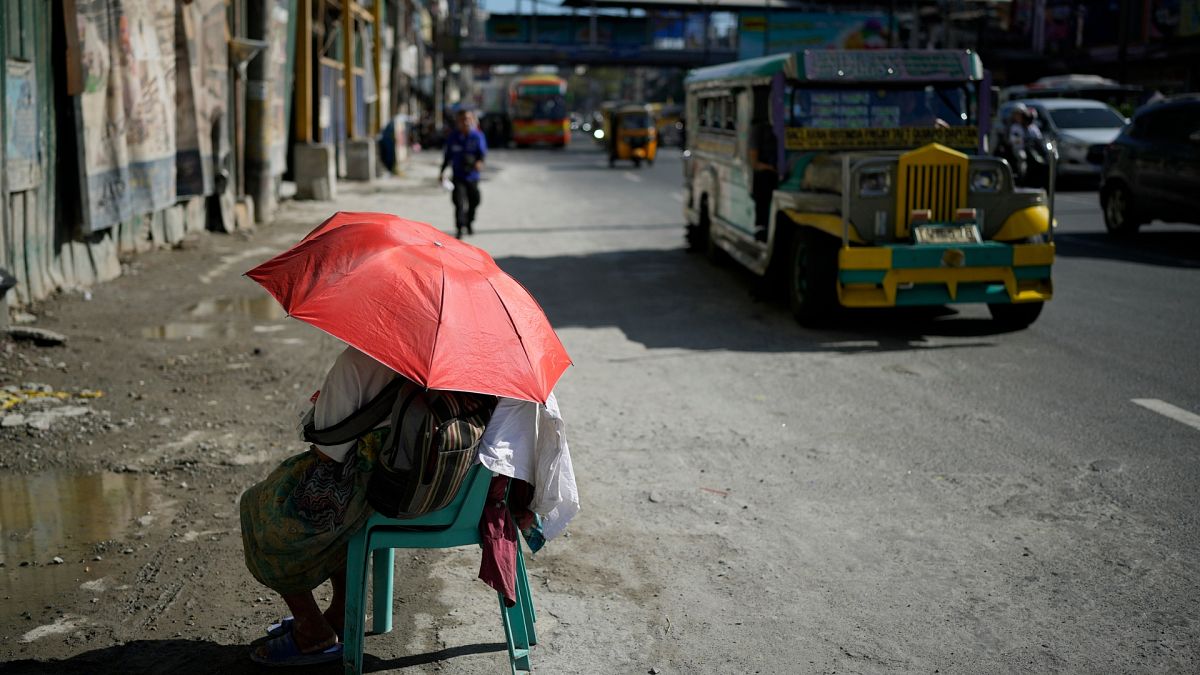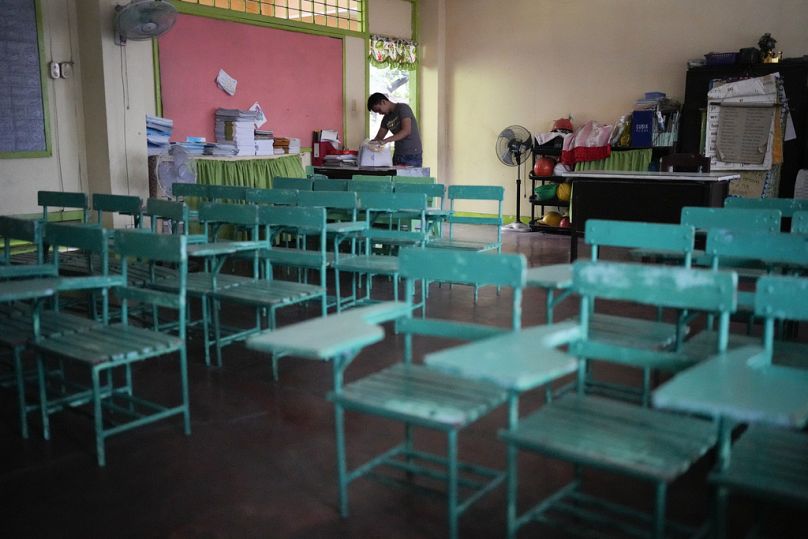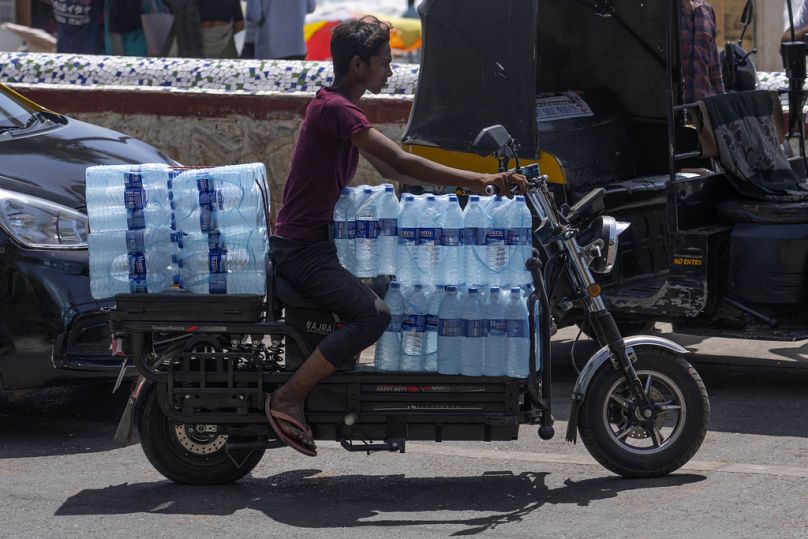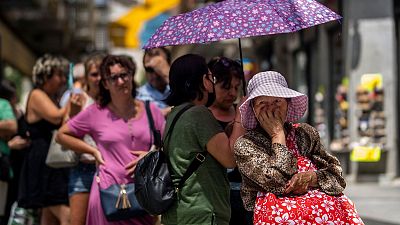Temperatures feel even hotter as high humidity reduces people’s ability to stay cool.
Heatwaves have caused school closures for millions of children and triggered health warnings across South and Southeast Asia.
Temperature records don’t show the whole story, however, with high humidity making it much harder for people to keep cool.
These dangerous conditions increase the chances of exhaustion and heatstroke and can even be deadly. Severe heatwaves have already been blamed for almost three dozen deaths across the region.
“Thousands of records are being brutalized all over Asia, which is by far the most extreme event in world climatic history,” weather historian Maximiliano Herrara said in a post on social media site X last week.
Exceptional heat brings school closures and health warnings
Temperatures soared to 44C in parts of Thailand with the capital city Bangkok reaching 40C. The heat index - which measures how hot it actually feels due to humidity - was listed at a “very dangerous” 52C on Tuesday.
New highs over the last month have beaten records set as far back as 1958, according to the Thai Meteorological Department. The district of Lampang saw the highest temperatures so far this year at around 44.2C - just short of Thailand’s all-time record of 44.6C seen in 2016 and 2023.
The weather agency has said it expects this summer to be 1C to 2C warmer on average than it was last year.
In the Philippines, millions of students were told to stay at home on Monday after authorities cancelled classes for two days due to dangerous heat. More than 47,000 schools were ordered to switch to online at-home lessons by the Department of Education.
People were also advised to avoid outdoor activities and stay hydrated, with the elderly and young people particularly vulnerable.
The heat index hit around 45C, according to the country’s meteorological agency. That is within a range it considers “dangerous” as it could trigger heatstroke.
Authorities in Bangladesh have also been forced to close schools twice in the last two weeks as temperatures reached 43C.
Throughout April, a heatwave has been blazing across some parts of India as well. On 21 April, the eastern city of Bhagora hit a high of over 45C. A ‘red alert’” warning was issued by the India Meteorological Department for several eastern and southern states on Tuesday with the weather agency warning that the heat was likely to get worse.
Catastrophic consequences of searing heat
A blistering heatwave in Cambodia - where temperatures have reached 43C this week - may have played a role in an ammunition explosion that killed 20 soldiers at an army base over the weekend.
The country’s defence ministry said the blast on 27 April had been caused by “a technical issue because the weapons are old, faulty and the hot weather”.
Hundreds of thousands of fish have died off in a reservoir in Vietnam’s Dong Nai province. Water levels are reportedly too low for the animals to survive after several weeks without rain. Local communities and media have blamed the mass die-off on drought, the heatwave and problems with reservoir management.
High temperatures are also putting pressure on electricity supplies. Heatwaves have led to increased demand for cooling options like air conditioning. This increased demand for energy has left electricity grids struggling to cope.
Thailand saw overall power usage surge to repeated record highs last week as temperatures soared. In Vietnam and the Philippines, increased demand has threatened to overload electricity grids.
Asia is warming faster than the global average
The El Niño weather phenomenon may be contributing to the heat seen across South and Southeast Asia. Warming in the Pacific Ocean is likely to have impacted weather, and this worsens near the Indian Ocean when the pattern shifts from El Niño to La Niña, which it is doing now.
Experts say the record-breaking conditions are likely down to a combination of global warming and these natural weather cycles.
The World Meteorological Organisation’s (WMO) most recent report revealed that Asia is warming faster than the global average. The warming trend has nearly doubled since the 1961 to 1990 period.
The continent was also the most disaster-hit region in the world last year. In 2023, flood and storm events alone caused more than 2,000 fatalities with more than 9 million people directly affected.
The WMO also noted that, despite growing risks posed by high temperatures, heat-related deaths are often not reported.





